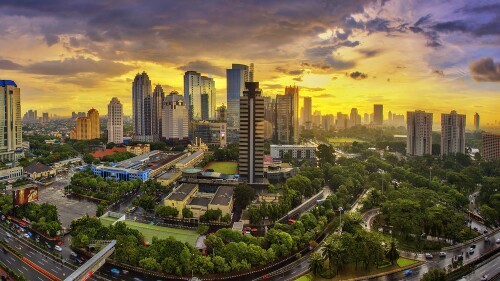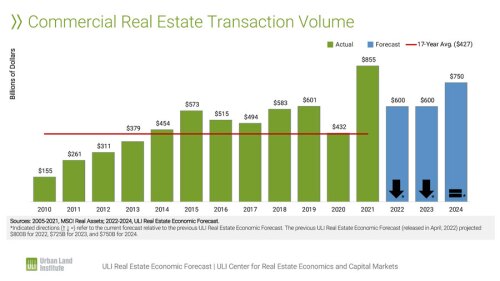From macro-economic forces to social, environmental, technological, and political disruption, property and the wider built environment are facing change on a scale not seen for decades, said panelists speaking at the 2018 ULI U.K. National Conference in London, including increased migration, ongoing low interest rates, and increased political discord.
Arend Kapteyn, chief economist at UBS Investment Bank, presented an analysis of gross domestic product (GDP) growth and credit extension in the decade following the 2008 global financial crisis before going on to address the key question on many real estate professionals’ minds: when will the Bank of England start to increase interest rates?
“[Support for the economy] will get withdrawn very slowly,” Kapteyn said. “In the U.S., the Federal Reserve is more advanced, but it is still normalising very slowly. In terms of housing in the U.K., the market is pricing in some normalisation, but the Bank of England will remain sensitive to housing and construction. Historically, the Bank [of England] has tended to follow the housing market rather than lead it.”
In fact, European central banks do not have a “good idea” of what a normal interest rate environment would look like, Kapteyn added. “The only thing that is predictable now is that interest rates will be running lower for some time,” he said. “That means there will be less headroom come the next recession and quantitative easing has become a permanent part of the tool kit.”
Kapteyn was followed by Alice Charles, project lead, cities and urban development, at the World Economic Forum, who emphasised the huge changes that are being brought about by rapid urbanisation across the world. Cities, she pointed out, take up just 2 percent of the world’s landmass, yet are home to 54 percent of its population and responsible for 80 percent of GDP.
In its latest population forecasts, Charles added, the United Nations (U.N.) actually revised its figures upwards and is now predicting that 68 percent of the world’s population will live in cities by 2050, with the majority of that growth set to take place in Asia and Africa. “We’re relatively insignificant,” she said. “Out of the 30 biggest cities in the world, only two—London and Paris—are in Europe. Only two European cities will remain important over the next 50 years.”
Charles also addressed the growing divide between cities and nation-states, pointing out that cities do not have a seat at the table at supranational organisations such as the U.N. and the World Bank, a situation that is creating tensions due to the increasing divergence of policy at the city and state levels. “Increasingly, city mayors are creating their own platforms to allow them to facilitate trade and ignoring the state,” she said.
Mass urbanisation also means that cities have to adapt to accommodate migrants—either external or internal—with all that means for pressures on issues such as housing and health services, Charles added. More important, it is also creating a political divide between urban and rural areas. “It seems to be driving voting patterns,” she said. “In the U.S., large cities tended to vote for Clinton; smaller towns voted for Trump.”
In part, Charles added, this was due to the jobs lost in America’s traditional industrial cities due to advances in technology, something she said would not be reversed and is increasingly happening elsewhere. “We’re seeing the same thing happening in Russia right now,” she said.
In fact, attitudes toward both migration and technology are critical to how different countries are addressing issues associated with aging populations, Charles said. To illustrate her point, she described the situation in Japan, where automation is being embraced and the economy is looking to invest in developing nations such as India and then repatriating revenues to support Japan’s aging population. In contrast, Germany believes that migration will help create the economic activity to pay for its retirees.
For his part, the session’s final speaker—David Goodhart, journalist, author, and head of the demography unit at Policy Exchange—addressed the social divisions revealed by both the Brexit referendum in the United Kingdom and the election of Donald Trump in the United States head on. “What I want to suggest is that it was a legitimate democratic pushback against the double liberalism of the last few decades—against both social and economic liberalism,” he said.
In his recent book, The Road to Somewhere, Goodhart divides Western electorates into two groups: the “anywheres” and the “somewheres.” Anywheres, he said, represent about a quarter of the population and are generally highly educated and mobile—they are able to create a life for themselves anywhere given their skills. Somewheres, on the other hand, tend to be lower skilled and intimately attached to the place where they were born and raised.
“This created a problem for politics,” said Goodhart. “The number of anywheres increased and led to an imbalance. Anywheres’ values have been completely dominant. As a result, non-university post-18 education was sidelined, for example, and small ‘c’ conservatism delegitimized.
“A large part of the country feels left behind in terms of esteem in society. But that has been challenged through politics. People have used the one thing they know makes them equal—one person, one vote.”


